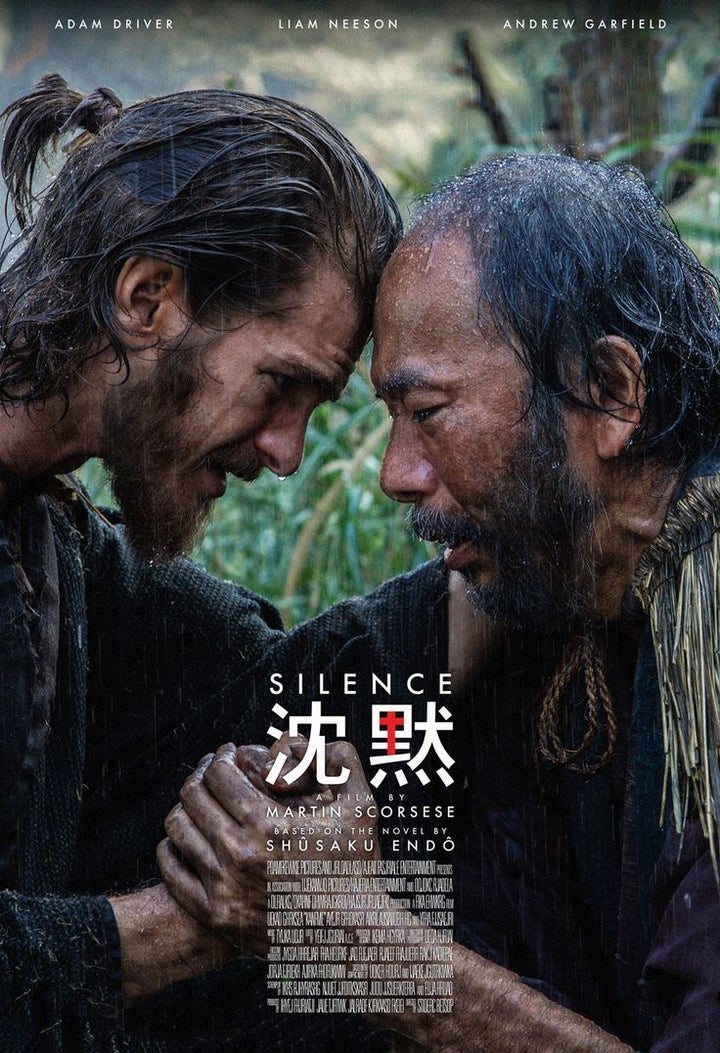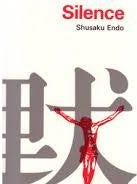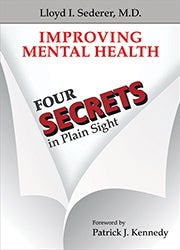
Silence
At one point, later into this remarkably nuanced and complex film, the Japanese Inquisitor (Issey Ogata) - the official responsible for finding and tearing the roots out of Christianity in mid-17th C. Japan - tells a story to the captured Jesuit Priest, Rodrigues, who was in Japan as a missionary and on a search mission as well. The Inquisitor says: A man has four beautiful concubines, all ravishing but given to fighting amongst themselves and creating great disharmony in his home. He throws them all out and peace returns to his surroundings and his life. Rodrigues, when asked what meaning he takes from the story, offers that he must have been a wise man.
The Inquisitor continues. He remarks that Spain, Portugal, Britain and Holland are the four concubines endangering the equanimity and the future of his homeland. At the time, there were more than 300,000 Christians in Japan (a country of 20 million people), converted by Jesuit missionaries from Europe. To the Japanese, Europe was indistinguishable from Christianity (and seen by some in power as its first entry before later potential invasion): It was Christianity’s tentacles through the spread of religion that threatened the house of Japan. Christianity had to be rooted out to preserve the rulers and very culture of Japan.
Shintoism, fundamental to Japanese identity (and highly present today), was not in dissonance with the Buddhism portrayed in Silence. Buddhism was permitted in Japan. It worked because it did not disrupt Shinto beliefs of preserving the past, protecting the indigenous culture, recognizing the sacred realm of nature, and allowing for its many gods.
Jesus and Catholicism, by contrast, were profoundly subversive to the Japanese mindset.
In Catholicism, there is not only a deity, a God, his son and the Holy Spirit. There also is a deep belief that every person has value, merits dignity merely by existing, and requires being treated with compassion. Catholic convictions about humanity, love, fairness and mercy were profound threats to the social structure of the despotic Japan of the 17th C., with its rule by the Shoguns. The method the Shoguns chose to protect their country, as they saw it, was to torture and apostatize Christians until they denounced their God and debased Jesus.
Father Ferreira (Liam Neeson), a beloved teacher of theology, has gone missing in Japan. Contact had been lost with him, save a dated letter that arrives in a Macao monastery early in the film. Two young priests, Fr. Rodrigues (Andrew Garfield) and Fr. Garrpe (Adam Driver) beseech their superior (Ciarán Hinds) and gain approval to depart on the highly likely to be lethal mission of going to Japan to find him, as well as to serve the Christians there who had been without priests from their Shogun expulsion, imprisonment and execution. So begins the journey they and this film take us on – in history, faith, religion, culture and human nature. It is a long and tortuous passage full of suffering and grace.
Rodrigues endures not only his own physical punishment but is made to witness, again and again, the horrific pain and agonal death of the Christian Japanese peasants who have taken him in - and, through him, have been able to once again practice the sacraments. Rodrigues’ test of his faith is whether he can bear the silence of Jesus as innocent people are tortured and their lives taken, often while their family and village watches. Can he bear his mental suffering despite no sign, no word, from his Lord? Can he bear his doubt and hold to his faith?
Ferreira comes fully into the film towards its end. He has apostatized, married a Japanese woman, has had children, and is a valuable asset to the Inquisitor. He is a tool employed by the Shoguns to further debase and eliminate Christianity in Japan. Rodrigues, after a long period of capture, is brought to meet Ferreira in a Buddhist monastery where he has been living, studying and writing. But he has turned his face away from Jesus. Ferreira speaks to Rodrigues, as a “fallen” Priest, about the country they both now inhabit. Ferreira maintains that Christianity never took root in Japan, and that even the profound faith and martyrdom that Rodrigues observed was based on a fictionalized view of the religion.
We are also delivered a profound lesson about how faith is different from religion because it calls not just for a fundamental belief in God and the acceptance of a particular doctrine. Faith serves as the inner core and strength for believers, even in the absence of definitive proof and the experience of an apparently silent God. It is faith that enables individuals to be loyal and true to what they hold sacred, in the face of insistent doubt and horror. Writer Anne Lamott once observed that the opposite of faith is not doubt but certainty.
Ferreira serves as the catalyst through whom the young priest comes to discover, amidst the impossible silence he has endured, that the true experience of faith has little to do with following the credo of a religion. Instead, it has to do with the essence of God and the purity of unconditional love that faith can generate. I am not a Catholic, by the way, but familiar with and deeply impressed by the faith that it can foster.
Almost seventeen years ago, my wife was in Tokyo as a Japan Society Fellow. She had occasion to meet with Fr. William Johnston SJ, an Irish Jesuit at Sophia University, who had translated Silence into English.

Silence, by Shusaku Endo
While they were conversing about the future of Christianity in Japan, Fr. Johnston remarked that he was not confident of the future of institutional Christianity, but offered that “… Jesus has a great future here”. He was making the distinction between Jesus (“Deus”) and the institutional Church. It was the love derived from faith in Jesus that the early Japanese Christians seem to have achieved. That, too, was what Rodrigues came to realize, his epiphany: It was not his doctrinal requirements and duties but the personal love of Christ that was necessary for him to save others, and in so doing preserve his authentic faith.
Silence is a rare film that beautifully renders some of life’s greatest mysteries, agonies and the power of belief. Suffering is inescapable to human life. And faith may be its greatest anodyne. Scorsese has done great justice to Endo’s book and to the turmoil – and transcendence - that a life of faith can produce.
…………..
Dr. Lloyd Sederer is a psychiatrist and public health doctor. The opinions offered here are entirely his own. He takes no support from any pharmaceutical or device company. His latest book is Improving Mental Health: Four Secrets in Plain Sight.

Improving Mental Health: Four Secrets in Plain Sight
@askdrlloyd
